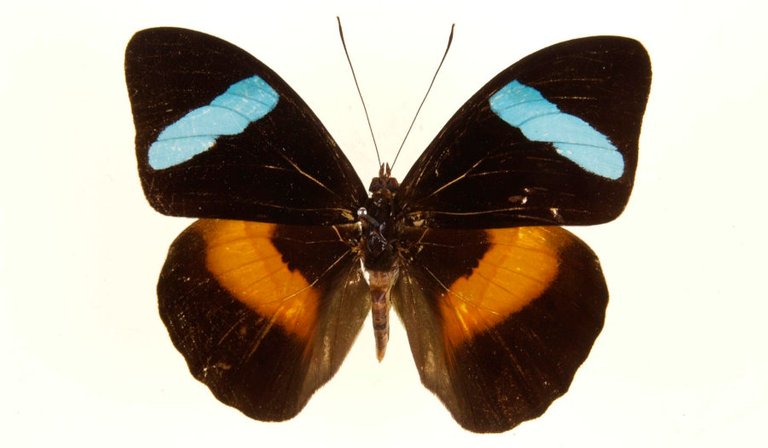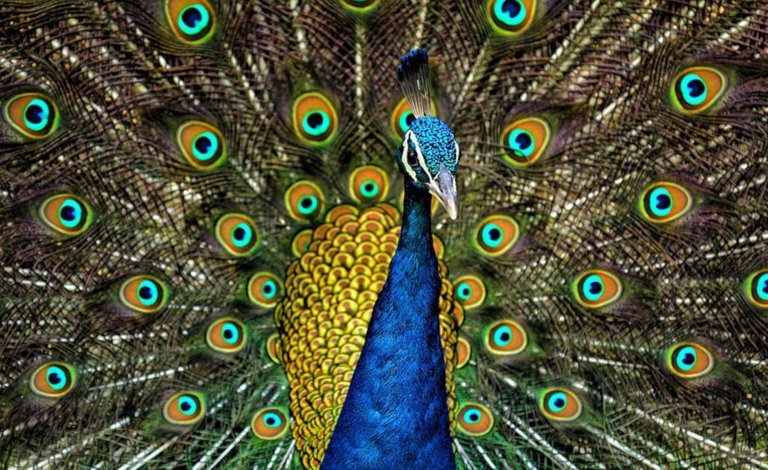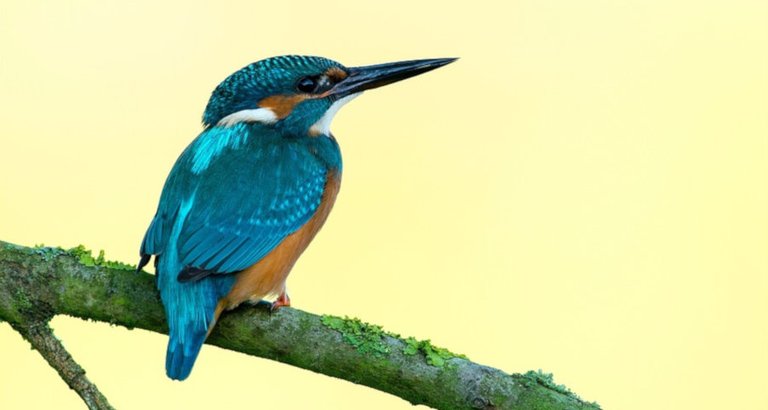Beautiful Blue
Blue is beautiful, at least I think so. And one could easily claim that it's one of nature's most abundant and most seen colors: the entire sky, all oceans, many insects, birds, many flowers and some fruit are blue.

source: Wikimedia Commons
Yet, when we look in the animal kingdom, blue is the most elusive color of all. When we do stumble upon blue in animals or plants, it's stunningly beautiful. Upon closer inspection, blue flowers, wings or feathers aren't blue at all. Blue pigment doesn't occur in nature it seems. There's even accumulating evidence that we humans couldn't see the color blue until later in our evolution:
"...in the Odyssey, Homer describes the ocean as "wine-dark" and other strange hues, but he never uses the word 'blue'. [...] Lazarus Geiger analysed ancient Icelandic, Hindu, Chinese, Arabic, and Hebrew texts to see if they used the colour. He found no mention of the word blue."
source: Science Alert
The ability of us humans to see the color blue is relatively recent in our evolution. No one could see the color blue until modern times. There are studies that show that certain tribes in Africa cannot distinguish blue from green but can see nuances in green that most of us cannot see.
source: Quora
This isn't that surprising if you consider the fact that in truth only the sky is intrinsically blue. There are almost no animals or plants that have blue pigments either. In the animal kingdom we know of exactly one animal, a butterfly called olivewing, that actually produces a blue pigment and little is known yet about how or why it does that:

source: Wikipedia
Pigments are what give animals color; a pigment is a substance that absorbs all visible colors, except the one we see of course. Black absorbs all colors and white absorbs none but instead reflects all colors. Isaac Newton showed that white light is comprised of all visible colors by shining white light through a prism, breaking it up in all colors of the rainbow. Colors are just different wavelengths of light, ranging from very long, red, to very short, violet. Herein lies the explanation why the sky is blue by the way: the shorter wavelengths of blue light are scattered much more than other wavelengths, by oxygen and nitrogen molecules in the atmosphere. Couple that with the fact that we perceive colors with red, green and blue cones on our eye's retina, and you "see" why the sky appears blue to us.
Back to the pigments. Pigment isn't entirely produced by the organism itself, but are in large part connected to our diets, to what we eat. This is why some animals change colors when maturing and why in some people the color of their eyes change through the years: I myself was born with blue eyes and blond hair, but was an adolescent with green - grayish eyes and dark brown hair. Now it's just grey in the rapidly diminishing hair-department... ;-)
But animals and plants don't make blue pigments, so where does the beautiful blue come from? Well, you might have noticed that many blue butterflies and bird-feathers have some sort of metallic shine to it; the color changes slightly depending on what angle you view it from or from what direction the light falls on it. And this is the first indication of how nature fakes its most vibrant blue colors. Nature "creates" blue with light interference, and in butterflies this is achieved by the structure of the minuscule pigmented scales that cover their wings:
Thus, when we zoom into the structure of the scale, we can observe ridge-like structures that are parallel to one another. When light hits the ridges and its branches, some of the light will reflect off the top layer, while the rest enters the branch. A part of the light that passes through the branch is reflected off the bottom layer of the same branch. This gives us two rays of light with equal wavelength and intensity. For most colors, the reflected light rays will be 'out of phase', so we don’t see those colors. However, in the case of the color blue, the two light rays that reflect off the ridge are perfectly 'in phase', meaning that they do not cancel each other out, allowing us to see the blue color. The light rays passing through are also bending at the correct angle, which helps cause the blue color.
source: Science ABC

When the two rays collide and the crests or troughs overlap one another, Constructive Interference takes place and the waves are said to be 'in phase'. However, if a crest overlaps a trough, then Destructive interference takes place and the waves are said to be 'out of phase'. - source: Science ABC
All blue in nature that we know of, except the aforementioned olivewing butterflies, is created using the microscopic structure and interference of light. And I must say I'm glad nature gave us these fake blues; they're some of the most beautiful colors I know of.

source: Wikimedia Commons

source: Max Pixel
Why Is Blue So Rare In Nature?
The above is a redacted version of a post I originally released on Steemit in December 2018
Thanks so much for visiting my blog and reading my posts dear reader, I appreciate that a lot :-) If you like my content, please consider leaving a comment, upvote or resteem. I'll be back here tomorrow and sincerely hope you'll join me. Until then, stay safe, stay healthy!

Recent articles you might be interested in:
| Latest article >>>>>>>>>>> | The Law Of Money |
|---|---|
| History Repeating | Immortal Greed |
| Our Place In Nature | "Overpopulation Crisis" Crisis |
| Retirement Age Nonsense | Our Greatest Gift |

Thanks for stopping by and reading. If you really liked this content, if you disagree (or if you do agree), please leave a comment. Of course, upvotes, follows, resteems are all greatly appreciated, but nothing brings me and you more growth than sharing our ideas.